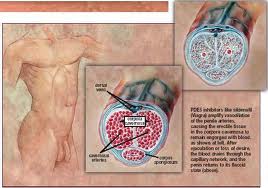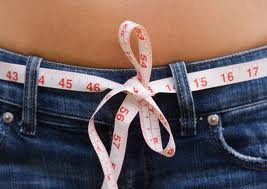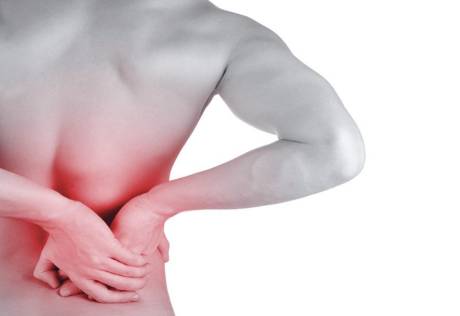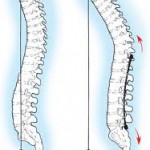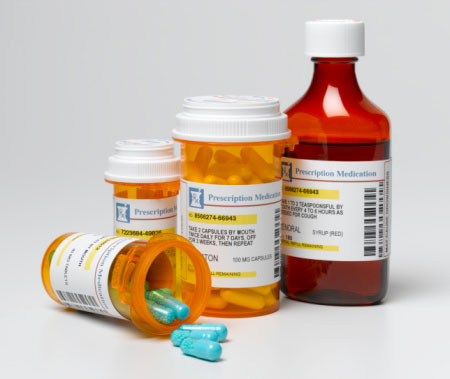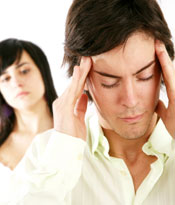Impotence is the disorder of the male reproductive system that disables the capability of the men to get is strong during the love-making activity. Nowadays, the impotence issue is being discussed a lot as people are getting more and more vocal about their health problems. Basically, impotence occurs due to the inconsistent flow of blood to the male reproductive system. The disturbance in the blood flow incapables men to attain the hard state for male reproductive organ. For this process to work properly, adequate blood flow in mandatory. It is only after the blood fills the veins and arteries in the male reproductive organ that man is able to attain the stiffness of male reproductive organ. As per the recent survey carried out by the International Journal of Impotence Research and Studies, around 60% of the men are noted to be suffering with the impotence, either temporarily of permanently. Previously only old-aged or middle-aged men were observed to be suffering with the impotence, but nowadays even young men are noted to be facing the problem of the impotence. This is basically noted due to the unhealthy lifestyle pattern that we are following. The issue of impotence puts an adverse impact on the overall health of the individual. As the man is not able to perform during the love-making activity he gets frustrated and loses his mental stability. In many of the cases due to the negligence of the married men toward the impotence problem, it leads to the divorce. So, to stay away from all these problems it is necessary to overcome impotence or better is to prevent the occurrence of the impotence. But, it is very sad to know that men are very shy to discuss about this problem, which leads to the negligence and makes the situation more problematic. Thus, it is my advice to all the men to be open about their health problem and share it with your partner and discuss it with doctor to overcome it.
Causal Factors
Causal factors of impotence are many. Some factors contribute directly, whereas some other factors contribute indirectly toward the occurrence of impotence. Basically the cause of impotence is noted to be the insufficient blood supply to the penile region.
Process of Impotence Occurrence
In the male reproductive system, the process of stiffness of male reproductive organ is being guided by the namely the two enzymes, cyclic guanoyl monophosphatase (cGMP) and phosphodiesterase 5 (PDE-5). The enzyme cGMP is coordinates the process of improving the blood supply to the male reproductive system. This signal is being given by brain to the male reproductive system. This way the man attains the stiffness of male reproductive organ. Once man achieves the climax, the process of enzyme PDE-5 begins. It withdraws the blood from the penile region. So the stiffness subsides. The impotence occurs when the amount of the enzyme PDE-5 in the male reproductive system is more. This enzyme curtails the blood flow from the male reproductive organ even before the person attains climax. As a result the stiffness subsides very shortly and person faces the problem of impotence.
Factors that cause impotence are as follows
Hormonal imbalance is being statistically observed to be one of the prominent causes of the impotence in men. Less amount of the testosterone in the man’s body, make the male reproductive organ gets flimsy. The muscles in the penile region don’t get the enough amounts of the blood flow and the required nitric oxide. As a result these muscles don’t get sturdy and the man fails to attain the stronger erections. So, to avoid such impotence you must pay a good attention toward the hormone levels in the body. If you are facing the hormonal imbalance then please try to treat it as it may later on lead to the impotence.
Injury to Male Reproductive System
Physical injury to the male reproductive organ damages the penile muscles, nerves, or veins in the male reproductive system. Even the injury to the testis is noted to malfunction the normal functioning of the male reproductive organ. This impotence arises due to this. The person with any physical injury to the male reproductive system has 90% chances of suffering with the impotence. The worst thing of the impotence caused due to the physical injury is that it is incurable. This is permanent impotence and can be treated only through the vascular reconstructive surgery, but the success rate of this mode of treatment is only 20%. Thence it would be better if you take a good care of the male reproductive system and should stay away from any thing that would cause physical injury to the male reproductive system
Psychological Conditions
Pressure to perform and anxiety occurring during the love-making sessions is the reason for the impotence in majority of the men. Thinking a lot about the performance during love-making is nevertheless going to work in your favor. Instead this will make your anxious about the performance and ultimately you will face the problem in getting the necessary erections. Sometimes, man thinks a lot about his image, he then get conscious about his male reproductive organ size which is okay, but he still feels it to be smaller. This way he feels ashamed of his insufficient male reproductive organ size and gets in tension about how will he be able to satisfy his ladylove? This is how he gets depressed, which ultimately disturbs his mental stability and reduces his stamina. Thus, he fails to hold on for sufficient time. Many times the impotence arising from the psychological imbalance can be cured easily by improving the methodology and practicing the technique.
Heart Problems
Healthy heart is a key to satisfactory love making activity. Your heart health is important to enjoy the love making activity to its best. As per the research studies it has been concluded that more than 60% of the heart patients suffer with the impotence. The unhealthy heart doesn’t perform well. So, the blood supply to the different parts of the body gets very improper. This way the sufficient blood doesn’t reach the body organs. The insufficient blood flow to the male reproductive organs results in the impotence. Atherosclerosis is the heart disease that deposits the plaque in the arteries and disturbs the blood supply thus increasing the chances of suffering with the impotence.
Diabete
Impotence is being closely linked with the diabetes. The abnormal sugar levels in the body keeps the density of the blood fluctuating. If the sugar amounts are more then it ultimately increases the density of the blood that makes it difficult to transfer to other body parts. As a result the blood doesn’t reach the male reproductive system. Nearly 40% of the diabetes patients are found to be suffering with the impotence. Whether you are suffering with type 1 or type 2 diabetes, the chances of suffering with malfunctioning of male reproductive system are doubled. It would be best for the diabetes patients to keep their sugar levels at constant level in order to stay away from the impotence.
Neurological Disorders
Neurological disorders disturb the functioning of the overall body. So, even the normal working of the male reproductive system is being perturbed. It is the brain that guards the functioning of the men during love making activity. The activity of the neurons gets improper due to the neurological disorders. The signals that are sent by the brain to the male reproductive system after the stimulation are not being delivered as the functioning of the brain is improper due to the neurological disorders. This is how the male reproductive system doesn’t get the required blood. As a result, the person starts facing the impotency problem. Working of the erection mechanism is being noted to be going wrong due to the neurological disorders like Alzheimer disease, multiple sclerosis, and Parkinson disease. If you suffer with any of these diseases then you need to get them treated at the initial stage because this will later on lead to the impotency in men.
Alcohol Consumption
Alcohol consumption if not good for the overall health, additionally it has a severe adverse impact on the normal functioning of the erectile mechanism. Due to the excessive alcohol intake the kidney of the person malfunctions as it is not able to cope with so much of alcohol present in the body. It then throws out this excessive alcohol through the urinary tract. The person gets the urination feeling frequently when he drinks a lot. When the alcohol passes through the urination tract it damages the nerves in the penile region. Sometimes even these penile nerves get broken. This way the blood is unable to stay into the male reproductive organ for the sufficient time as a result men loses the erection quickly. Thus, alcoholic men suffer with impotence.
Chewing or Smoking Tobacco
We all know smoking is injurious to health, but we all still smoke. Now, I want to make you aware of one more ill effects of smoking i.e. Smoking tobacco will make you impotent. Remember your love life would be completely devastated by the use of the tobacco. Either you chew or smoke, both contain high amount of the nicotine that influences the blood supply to the male reproductive organ and certainly reduces the amount of blood reaching to the penile region. As a result, men are not able to attain the erection or sometimes they lose the erection very quickly during the love-making session. This way the smokers get prone to the impotence.
Peyronie’s Disease
Peyronie’s disease is the abnormal condition of the male reproductive organ. This disease is characterized by the slightly angular curvature of the male reproductive organ. The person is said to be suffering with Peyronie’s disease when his male reproductive organ is noted to be bending in between. The bend is not from the base, but it is from the central position. In this disease the veins and nerves in the male reproductive organ gets constricted due to the bend. This way the blood doesn’t reach to the all parts of the male reproductive organ. Due to the improper distribution of the blood in the penile region the men with Peyronie’s disease also gets prone to the impotence.
Obesity
Obesity is the disease that is caused by the excessive weight gain. As per the research studies the person who is obese is double the times prone to the impotence. During the study from 100 men about 37 obese men were observed to facing some kind of erection problems. During the obesity the excessive amount of the fats and carbohydrates gets deposited in the body. Excessive amounts of fats put the stress on the subordinate veins and arteries that supply blood to all parts of the body. The nerves and veins get narrow and thus the blood supply gets disturbed. As a result male reproductive system doesn’t get the required blood flow to enact the erection process. This leads to the failure in the erection and finally it leads to the impotency in men.
Drugs and Surgeries
Impotence is being observed prominently among the men who have undergone the surgeries. Specifically the men who have undergone heart surgeries, kidney replacement face the problem of impotence. Even the men who undergo major surgeries for bladder cancer (radical cystectomy) and for prostate cancer face the problem of impotence as they need to remove the nerves from the male reproductive organ. You may face the impotence problem due to the intake of drugs like tranquilizers, heart medications, and high blood pressure controlling medications, antidepressants, and sedatives. These drugs may cause either temporary or permanent impairment of the erection mechanism, so please avoid taking these drugs without any reason.

